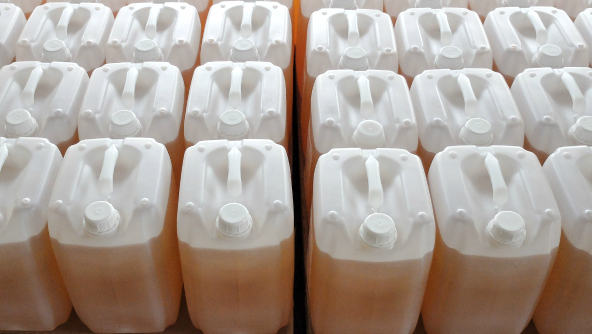Triclosan and its Uses
Triclosan is a solid crystalline chemical used primarily as an antibacterial agent in a variety of consumer products. Originally used as a cleaning scrub in hospitals in the 1970s, triclosan is now present in soap, detergent, shampoo, deodorant, toothpaste, surgical cleaners, pesticides, and even toys, although its efficacy and safety have become controversial.
Get access to the industry-leading database of MSDS / SDS documents by signing up for a free trial.
Handling Triclosan Safely
While consumer products containing small amounts of triclosan are considered safe to use, pure triclosan is moderately or seriously hazardous to the skin, eyes and respiratory system. It can cause symptoms such as redness, irritation and sore throat. In the event of accidental exposure to this chemical, seek immediate medical attention and follow these first aid measures:
- Skin Contact: Immediately flush skin with water and disinfectant soap and use an emollient on irritated area. Wash contaminated clothing before reuse.
- Eye Contact: Rinse eye(s) with water for at least 15-20 minutes.
- Ingestion: Rinse mouth thoroughly with water. Do NOT induce vomiting.
- Inhalation: Move to fresh air and administer artificial respiration if needed.
To avoid these health hazards, follow proper safety precautions while handling triclosan in the workplace. Wear protective clothing, safety glasses and chemical-resistant gloves at all times, and be sure to wash your hands after handling. Proper exhaust ventilation and eyewash stations should be provided wherever triclosan is handled. Avoid prolonged exposure to triclosan, including triclosan dust or vapor.
Triclosan in its naturally occurring state is a combustible powder that, in the event of a fire, can create an explosive dust. Exercise care to prevent dusty conditions from developing. During a fire, use standard chemical firefighting measures and be sure to wear a protective suit and self-contained breathing apparatus.
Triclosan is also extremely toxic to aquatic life and can cause long-lasting negative effects on the environment in the event of a spill or improper disposal. When handling this chemical, it’s important to prevent it from being released into waterways.
Learn more about triclosan and other hazardous chemicals by reviewing their associated safety data sheets using the SDS search tool.
Triclosan Storage & Disposal
Store triclosan in a dry and well-ventilated space, in tightly closed containers away from incompatible materials.
Always dispose of triclosan in accordance with federal, state and local environmental regulations, to prevent it from leeching into the environment and harming wildlife.
Get access to the industry-leading database of MSDS / SDS documents by signing up for a free trial.
If you need help managing your SDS library or your chemical inventory, our Chemical Management software will give you the support you need. You and your entire workforce will have unobstructed 24/7 access to your entire SDS library from anywhere, anytime. Our chemical ingredient indexing capabilities also provide visibility into your inventory at the ingredient level, cross-reference the ingredients against numerous regulatory lists, and summarize key information about regulatory radar screens and established occupational exposure limits (OELs).Contact us today to request a demo so you can see for yourself how our Chemical Management software can help you meet regulatory requirements, including the updated HazCom Standard, and keep your entire workforce safe.
